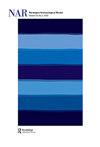Bodies in Motion: Narratives and Counter Narratives of Gendered Mobility in European Later Prehistory
IF 1.1
3区 历史学
0 ARCHAEOLOGY
引用次数: 23
Abstract
Normative notions of sex and gender were prevalent in discussion of European prehistoric societies until the last quarter of the 20th century. The progressive work that challenged a binary approach, published particularly in the 1990s, created an anticipation for further nuanced interpretation. This paper argues that, in contrast to this expectation, there was a surprising return to narrating a past of binary sex and gender. Societal roles have continued to be imagined as formalised through structures based on biological sex, with men seen as active mobile agents, while women were passive and static homemakers. We argue that not only is this unhelpful, the archaeological evidence renders it incorrect. We highlight the inherent conflicts in the data to show that investigating sex and gender in the past is difficult with imperfect and complex archaeological evidence. It requires careful and deliberate consideration to avoid normative explanations. In conclusion, we propose that investigating mobility is a particularly effective topic for examining past gendered societal roles.运动中的身体:欧洲后期史前性别流动的叙述与反叙述
直到20世纪末,性和性别的规范性观念在欧洲史前社会的讨论中一直很普遍。特别是在20世纪90年代出版的挑战二元方法的进步作品,创造了对进一步细致入微的解释的预期。这篇论文认为,与这种期望相反,讲述性别和性别二元的过去出现了令人惊讶的回归。社会角色继续被想象为通过基于生理性别的结构形式化,男性被视为主动的流动代理人,而女性则是被动和静态的家庭主妇。我们认为,这不仅没有帮助,考古证据也使其不正确。我们强调了数据中的固有冲突,以表明由于考古证据不完善和复杂,调查过去的性别和性别是困难的。它需要仔细和深思熟虑,以避免作出规范性解释。最后,我们提出,调查流动性是一个特别有效的话题,可以用来研究过去的性别社会角色。
本文章由计算机程序翻译,如有差异,请以英文原文为准。
求助全文
约1分钟内获得全文
求助全文
来源期刊

Norwegian Archaeological Review
ARCHAEOLOGY-
CiteScore
2.10
自引率
0.00%
发文量
13
期刊介绍:
Norwegian Archaeological Review published since 1968, aims to be an interface between archaeological research in the Nordic countries and global archaeological trends, a meeting ground for current discussion of theoretical and methodical problems on an international scientific level. The main focus is on the European area, but discussions based upon results from other parts of the world are also welcomed. The comments of specialists, along with the author"s reply, are given as an addendum to selected articles. The Journal is also receptive to uninvited opinions and comments on a wider scope of archaeological themes, e.g. articles in Norwegian Archaeological Review or other journals, monographies, conferences.
 求助内容:
求助内容: 应助结果提醒方式:
应助结果提醒方式:


